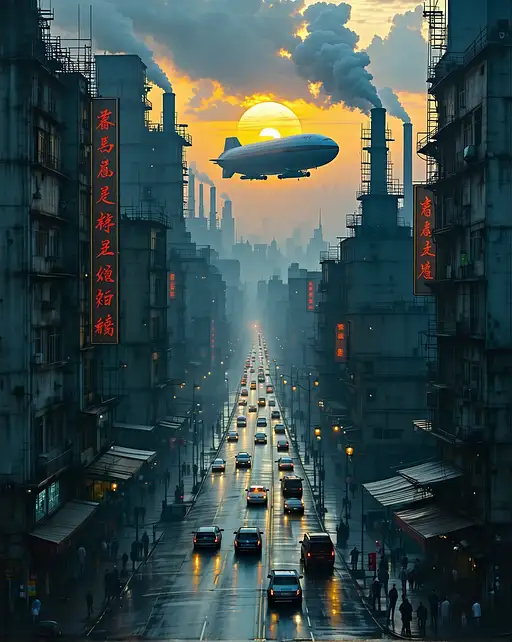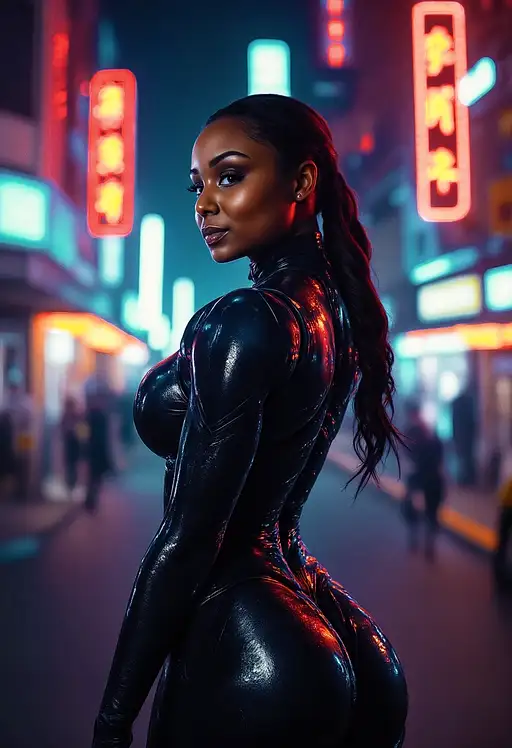
5 months ago
This image depicts a futuristic city street at dusk, featuring towering, aged buildings, bustling vehicular traffic on wet roads, and a prominent airship sailing above the industrial cityscape under a warm, sunset sky. The scene is an urban landscape with a blend of old and futuristic elements, set during the transition from day to night. The buildings are tall and weathered with elaborate details, iron railings, and glowing windows, giving a sense of a long-established city. Many buildings feature neon signs with what appear to be Asian characters, illuminated against the darkening facades. The streets are wet, reflecting the light from the buildings and vehicle headlights, suggesting recent rain or a damp climate. Several cars and a truck are visible on the road, navigating the thoroughfare. Above the city, dominating the upper part of the image, is a large airship or dirigible. In the background, numerous industrial structures with tall smokestacks can be seen, many with emissions, further contributing to the dense, urban-industrial atmosphere. The sky is a warm blend of oranges, yellows, and blues and purples from the sunset, with a prominent sun disc visible behind the smokestacks, creating a dramatic contrast with the darker city below. The atmosphere is thick and perhaps hazy from industry. The mood is somewhat melancholic, yet captivating, suggesting a world that is both advanced and worn, a bustling metropolis operating under a moody sky.

